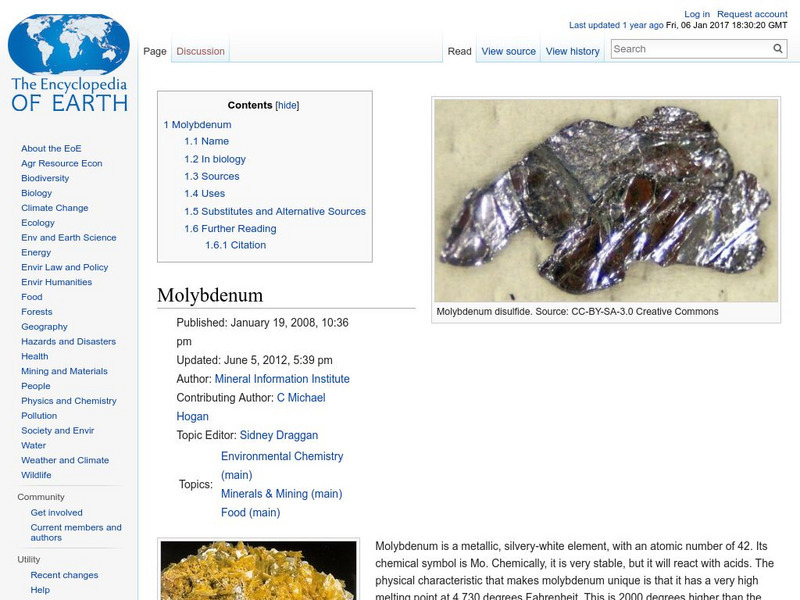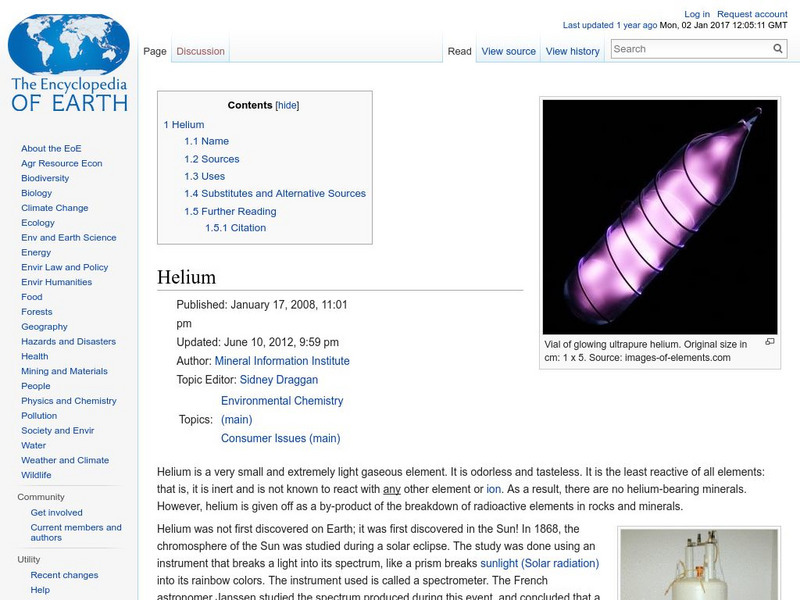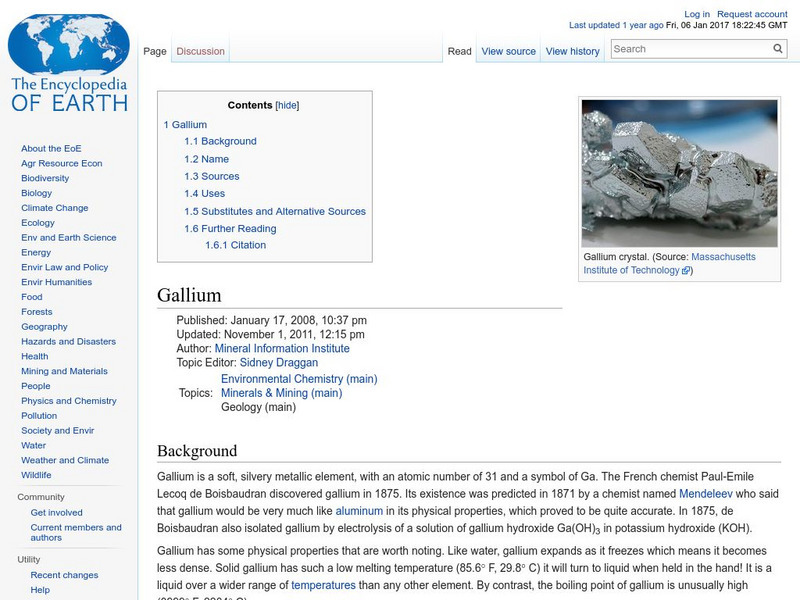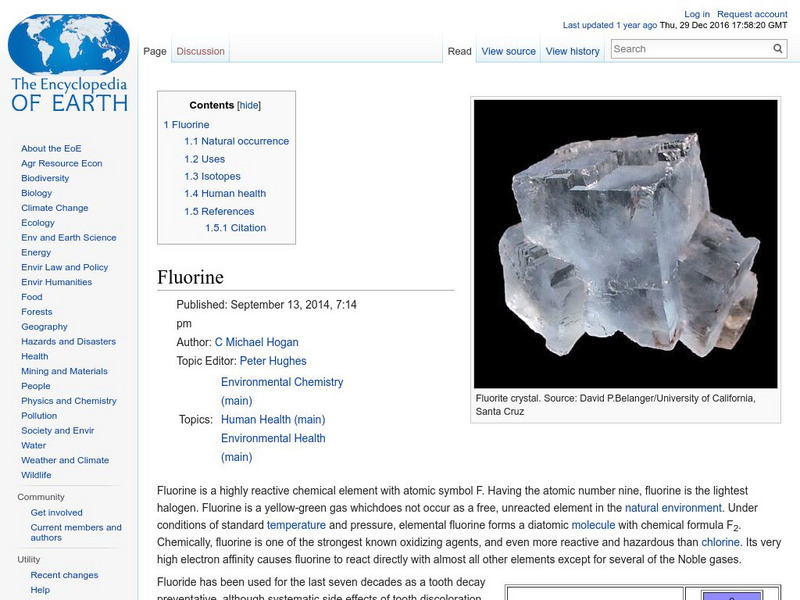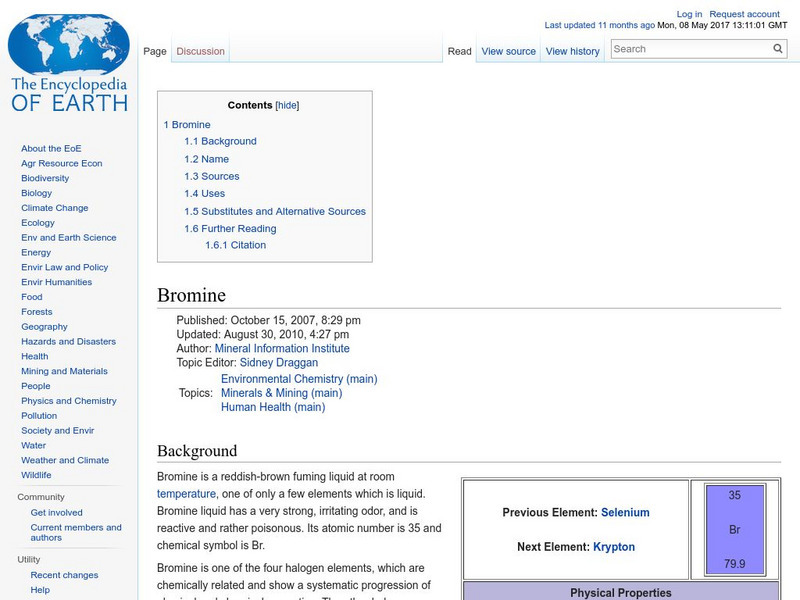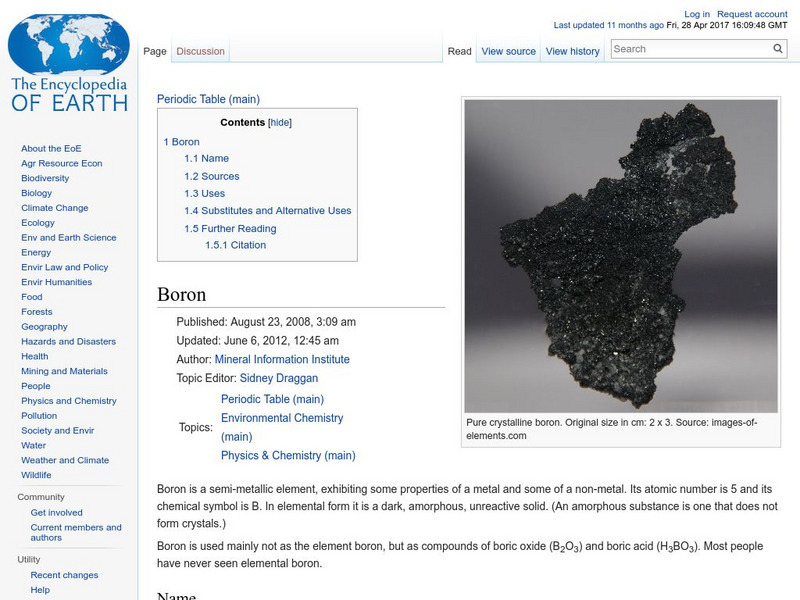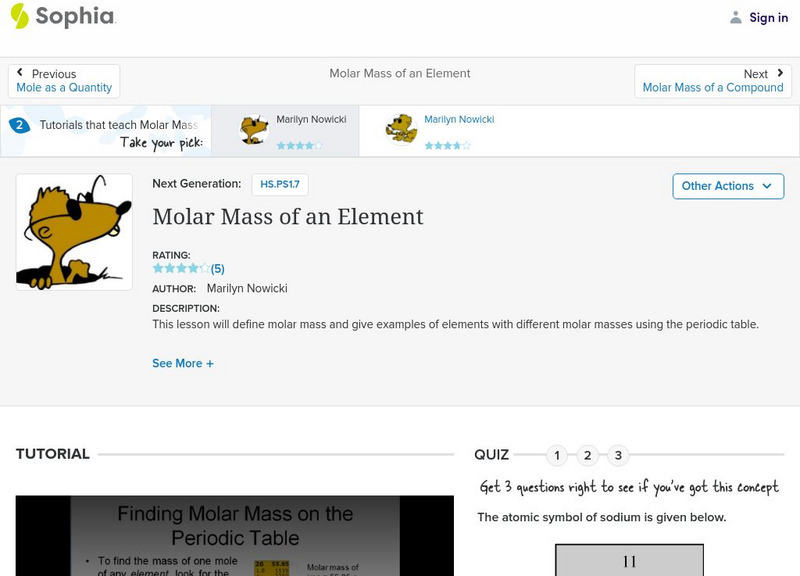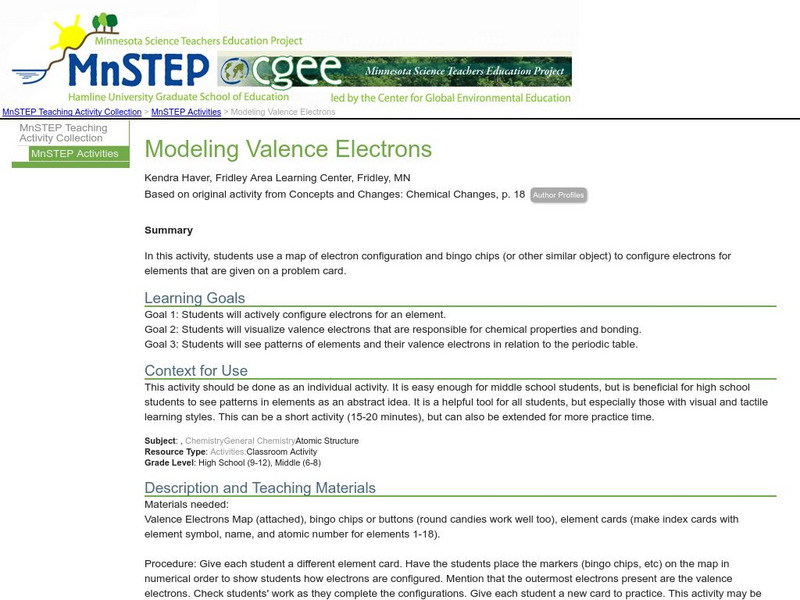Hi, what do you want to do?
Encyclopedia of Earth
Encyclopedia of Earth: Platinum
Information about the element, Platinum, atomic number 78. Covers its physical and atomic properties, how abundant it is on the Earth, sources, uses, potential substitutes, and permissible exposure limits.
Encyclopedia of Earth
Encyclopedia of Earth: Molybdenum
Information about the metallic element, Molybdenum, atomic number 42. It is unique in having an extremely high melting point. Covers its discovery, its biological importance, its physical and atomic properties, how abundant it is on the...
Encyclopedia of Earth
Encyclopedia of Earth: Manganese
Information about the element, Manganese, atomic number 25. Covers physical properties, atomic properties, how abundant it is on the Earth, details about health-related regulations, and its importance to human health. Also discusses...
Encyclopedia of Earth
Encyclopedia of Earth: Lithium
Information about the metallic element, Lithium, atomic number 3. Covers its discovery, its physical and atomic properties, how abundant it is on the Earth, sources, uses, potential substitutes, and permissible exposure limits.
Encyclopedia of Earth
Encyclopedia of Earth: Lead
Information about the heavy metal, Lead, atomic number 82. Gives some interesting historical details about lead's use in the past. Covers physical properties, atomic properties, how abundant it is on the Earth, and details about...
Encyclopedia of Earth
Encyclopedia of Earth: Iron
Information about the element, Iron, atomic number 26. Covers physical properties, atomic properties, how abundant it is on the Earth, and details about health-related regulations, and its importance to plant and to animal health. Also...
Encyclopedia of Earth
Encyclopedia of Earth: Iodine
Information about the element, Iodine, atomic number 53. Covers physical and atomic properties, how abundant it is on the Earth, permissible exposure limits, sources, uses, and potential substitutes.
Encyclopedia of Earth
Encyclopedia of Earth: Helium
Information about the element, Helium, atomic number 2. Covers its discovery, physical and atomic properties, how abundant it is on the Earth, its uses, possible substitutes, and permissible exposure limits.
Encyclopedia of Earth
Encyclopedia of Earth: Gold
Information about the element, Gold, atomic number 79. Covers its unique physical properties, its atomic properties, how abundant it is on the Earth, sources, uses, and potential substitutes.
Encyclopedia of Earth
Encyclopedia of Earth: Gallium
Information about the metallic element, Gallium, atomic number 31. Covers its discovery, its physical and atomic properties, sources, uses, how abundant it is on the Earth, and permissible exposure limits.
Encyclopedia of Earth
Encyclopedia of Earth: Fluorine
Information about the element, Fluorine, atomic number 9. Covers physical and atomic properties, how abundant it is on the Earth, and permissible exposure limits. Also discusses uses, isotopes, and health concerns.
Encyclopedia of Earth
Encyclopedia of Earth: Copper
Information about the element, Copper, atomic number 29. Covers its history, sources, physical properties, atomic properties, how abundant it is on the Earth, details about permissible exposure, uses, and possible substitutes.
Encyclopedia of Earth
Encyclopedia of Earth: Cobalt
Information about the element, Cobalt, atomic number 27. Covers physical properties, atomic properties, how abundant it is on the Earth, and details about health-related regulations, and its importance to human and to animal health. Also...
Encyclopedia of Earth
Encyclopedia of Earth: Chromium
Information about the element, Chromium, atomic number 24. Covers discovery, physical and atomic properties, how abundant it is on the Earth, permissible exposure limits, sources, uses, and potential substitutes.
Encyclopedia of Earth
Encyclopedia of Earth: Bromine
Information about the element, Bromine, atomic number 35. Covers physical properties, atomic properties, how abundant it is on the Earth, and details about health-related regulations. Discusses sources, uses, and substitutes.
Encyclopedia of Earth
Encyclopedia of Earth: Boron
Information about the semi-metallic element, Boron, atomic number 5. Covers physical and atomic properties, how abundant it is on the Earth, sources, uses, and possible substitutes.
Encyclopedia of Earth
Encyclopedia of Earth: Arsenic
Basic information about the element Arsenic, atomic number 33. Covers physical properties and properties, sources, how abundant it is on the Earth, uses, and toxicity.
Encyclopedia of Earth
Encyclopedia of Earth: Mercury
Information about the element, Mercury, atomic number 80. Covers physical and atomic properties, where it is found, and health-related regulations. Also discusses its three main forms, uses for mercury, ways it spreads throughout the...
eSchool Today
E School Today: Elements, Compounds, Substances and Mixtures
Learn about the classification of matter based on whether the chemical composition is pure or a mixture. Understand the definitions of elements, compounds, substances, and mixtures, and what the differences are between them. Five types...
Encyclopedia of Earth
Encyclopedia of Earth: Plutonium
Information about the element, Plutonium, atomic number 94. Covers physical properties, atomic properties, how abundant it is on the Earth, and details about health-related regulations. Discusses reactor- and weapons-grade plutonium, and...
Encyclopedia of Earth
Encyclopedia of Earth: Nitrogen
Information about the element, Nitrogen, atomic number 14. Covers common chemical transformations, its physical properties, atomic properties, how abundant it is on the Earth, and details about health-related regulations. Also discusses...
Sophia Learning
Sophia: Molar Mass of an Element: Lesson 1
This lesson will define molar mass and give examples of elements with different molar masses using the periodic table. It is 1 of 2 in the series titled "Molar Mass of an Element."
Sophia Learning
Sophia: Molar Mass of a Compound: Lesson 2
This lesson will define molar mass and give examples of how to determine the molar mass of different compounds using the periodic table. It is 2 of 2 in the series titled "Molar Mass of a Compound."
Science Education Resource Center at Carleton College
Serc: Modeling Valence Electrons
In this activity, students use a map of electron configuration and bingo chips to configure electrons for elements that are given on a problem card. Students will see patterns of elements and their valence electrons in relation to the...






